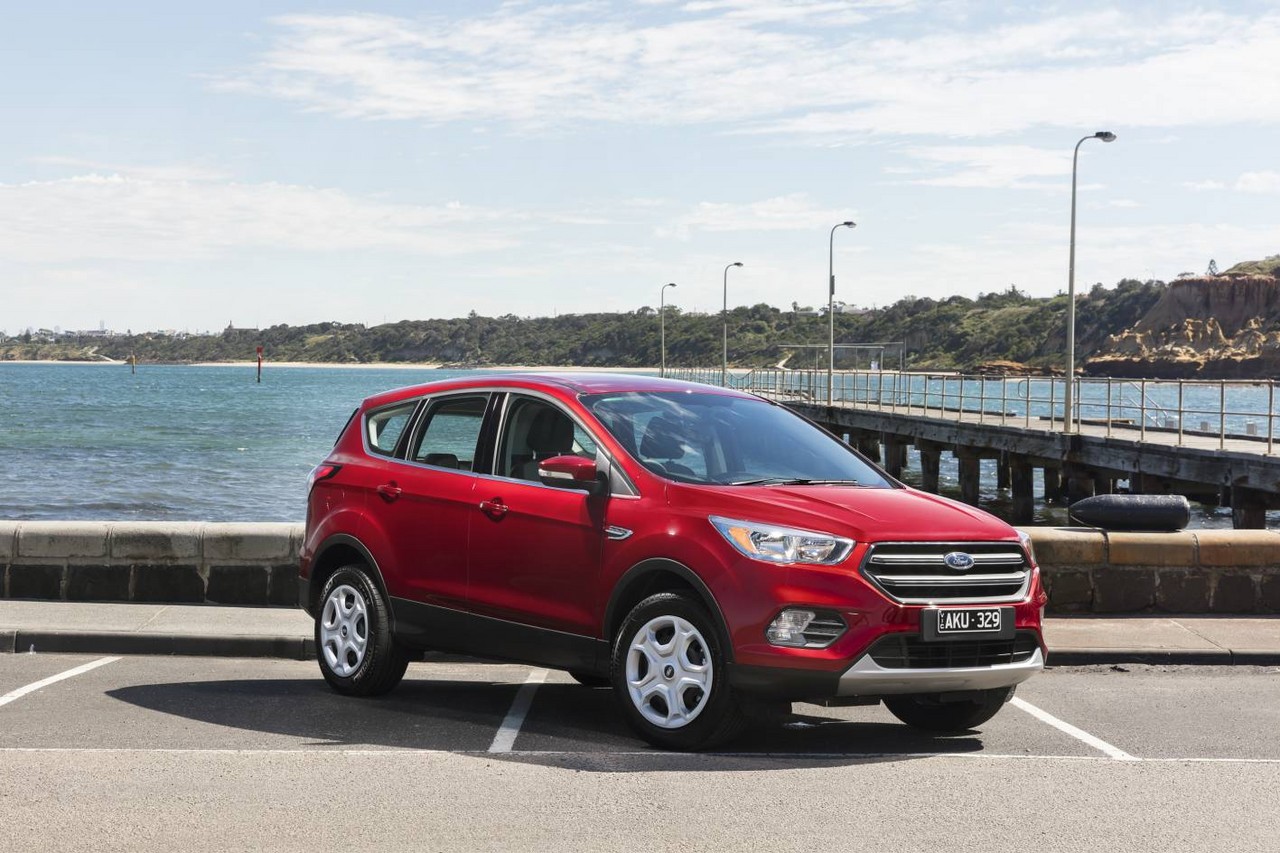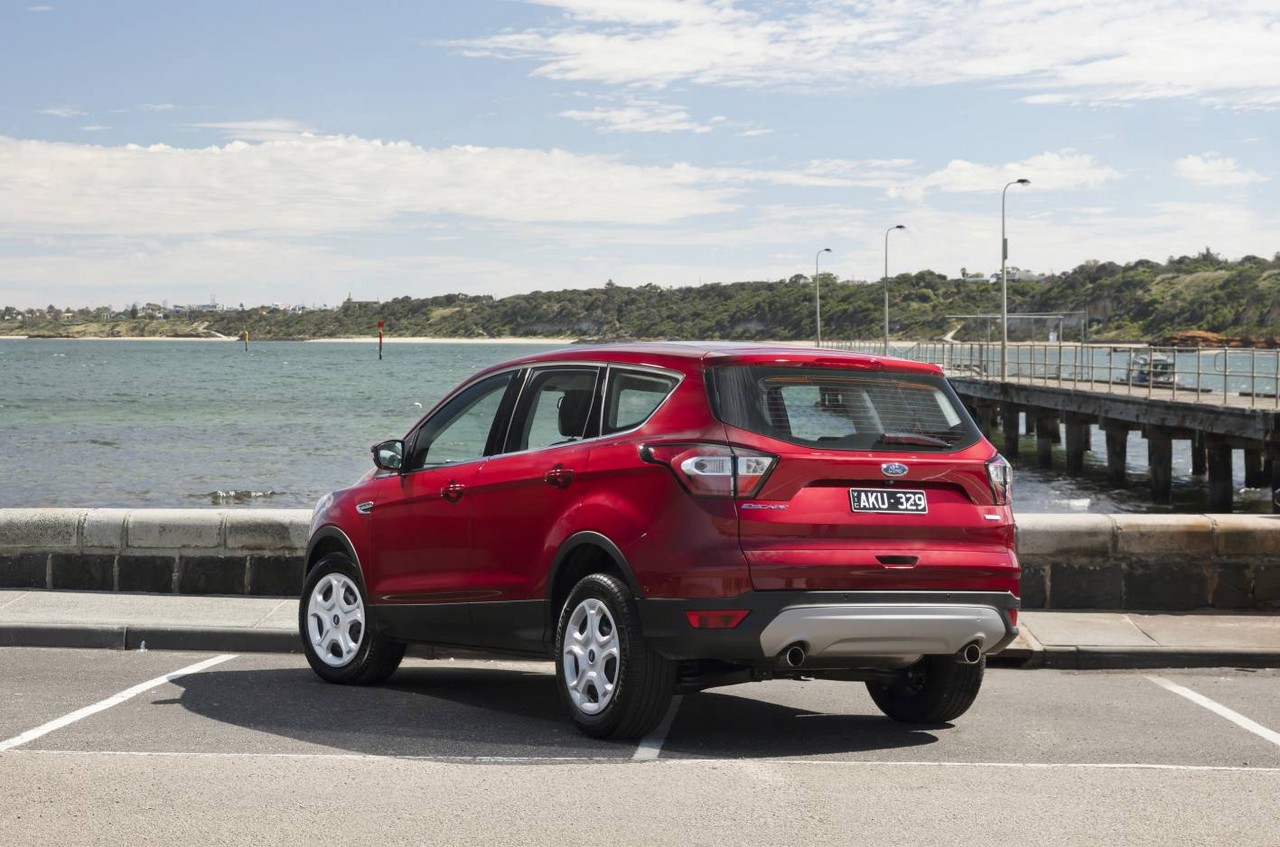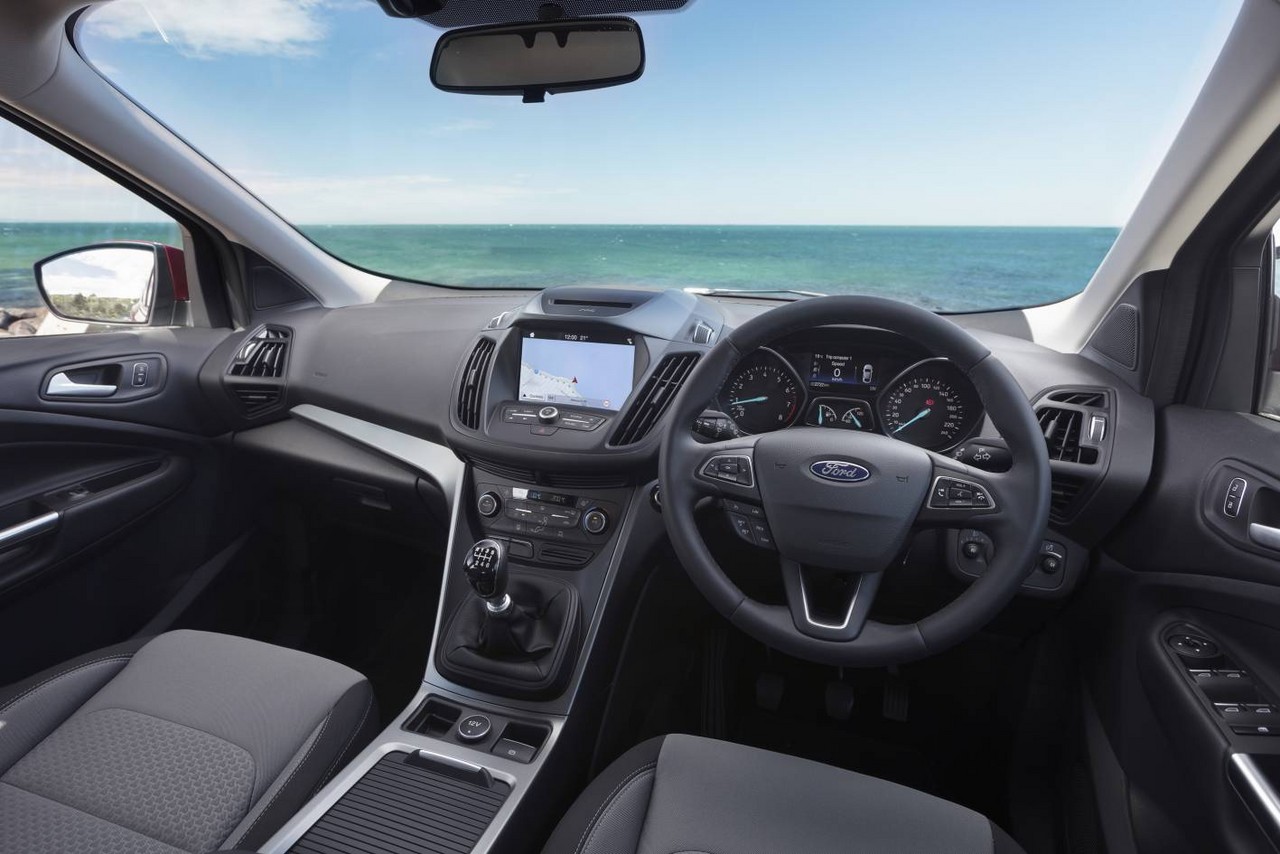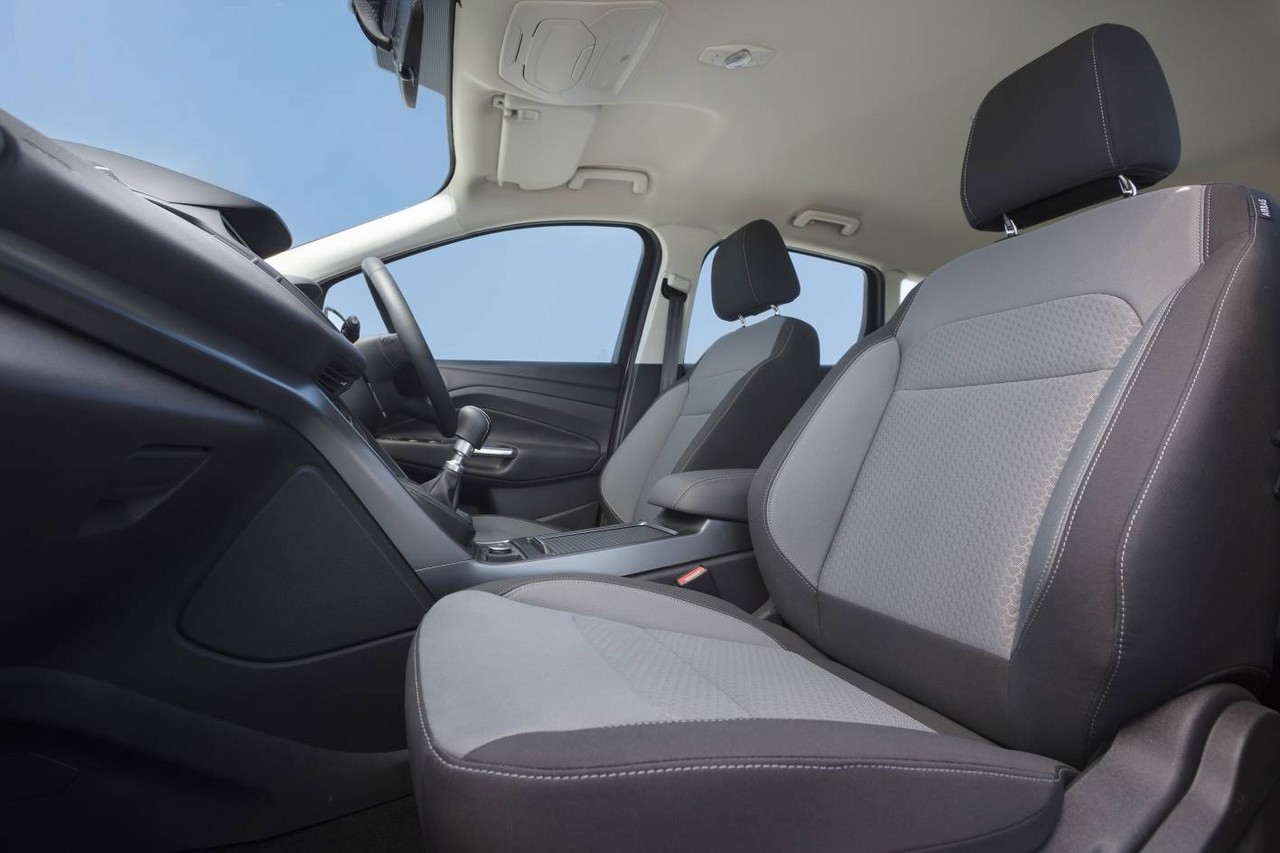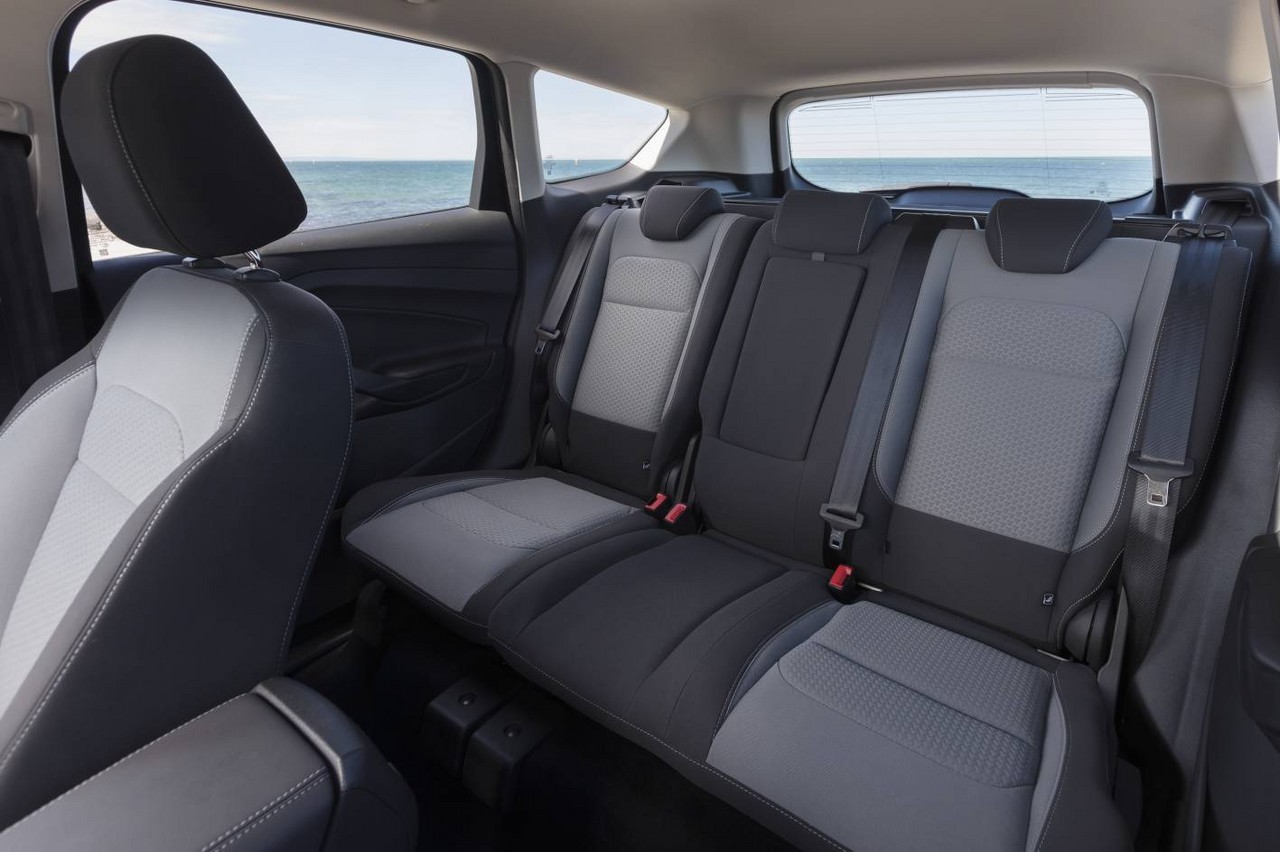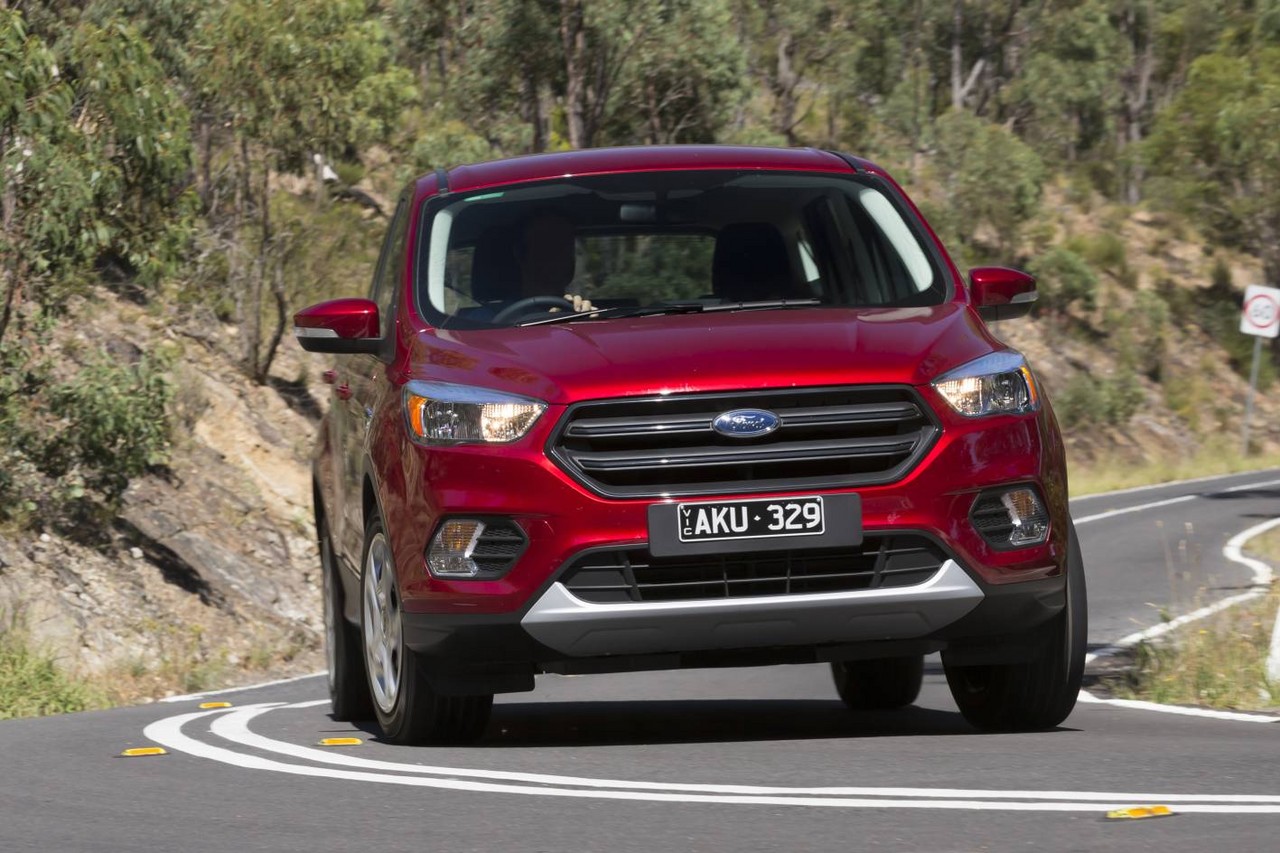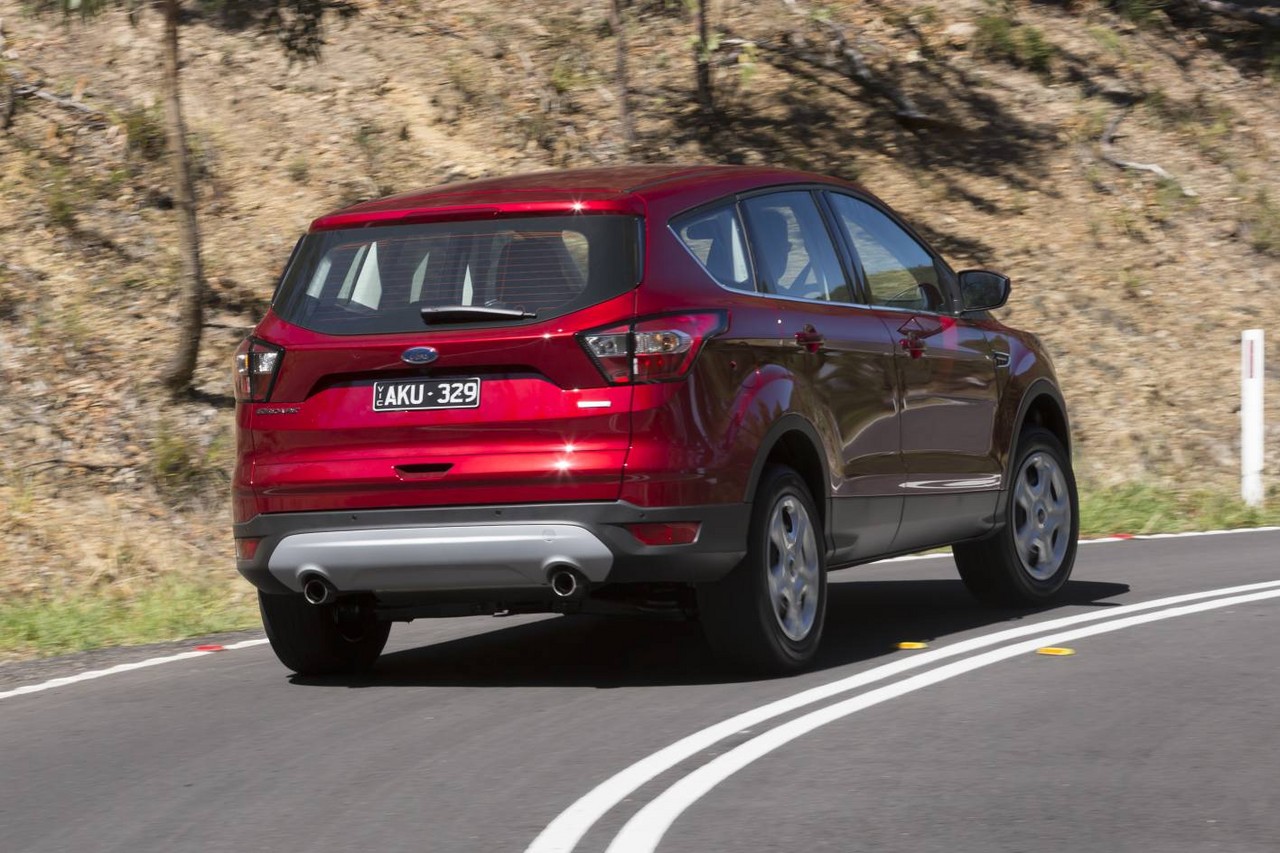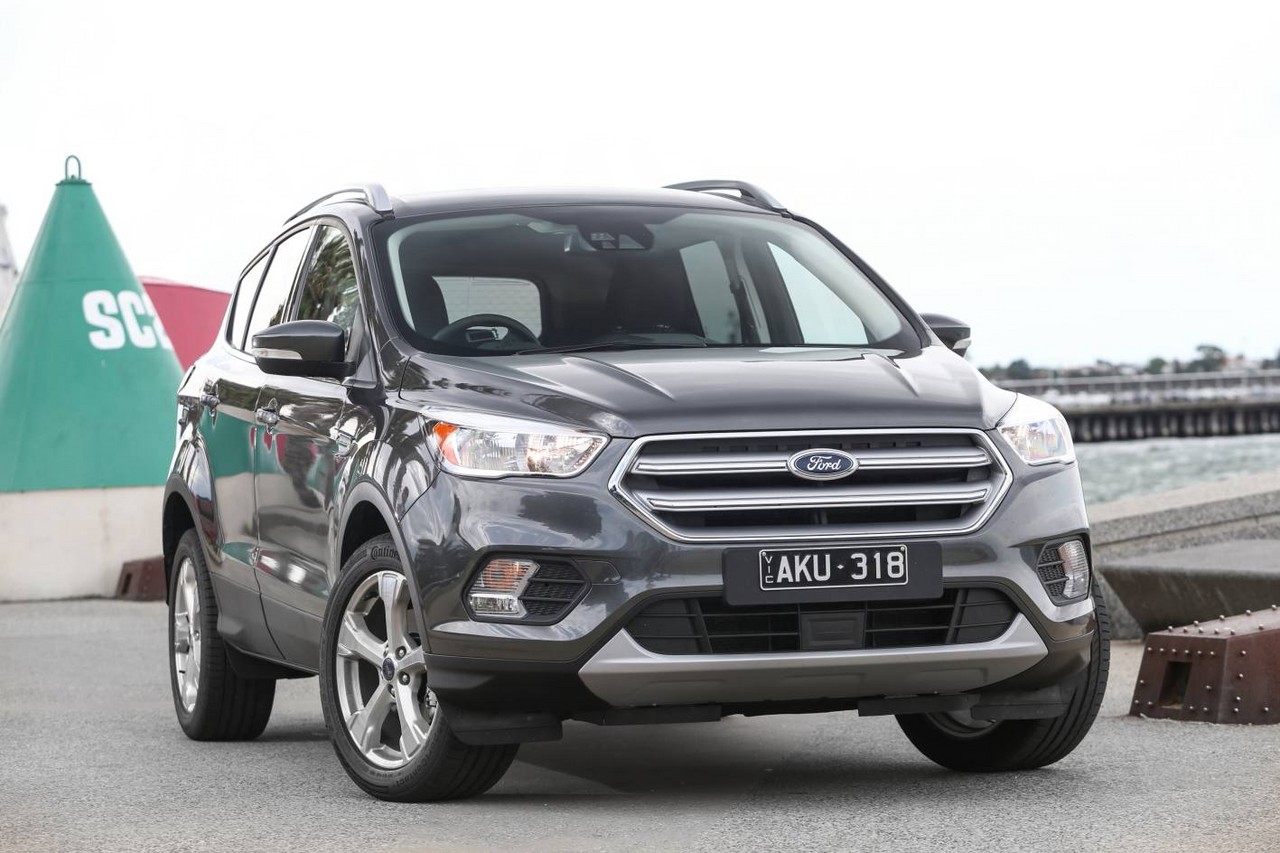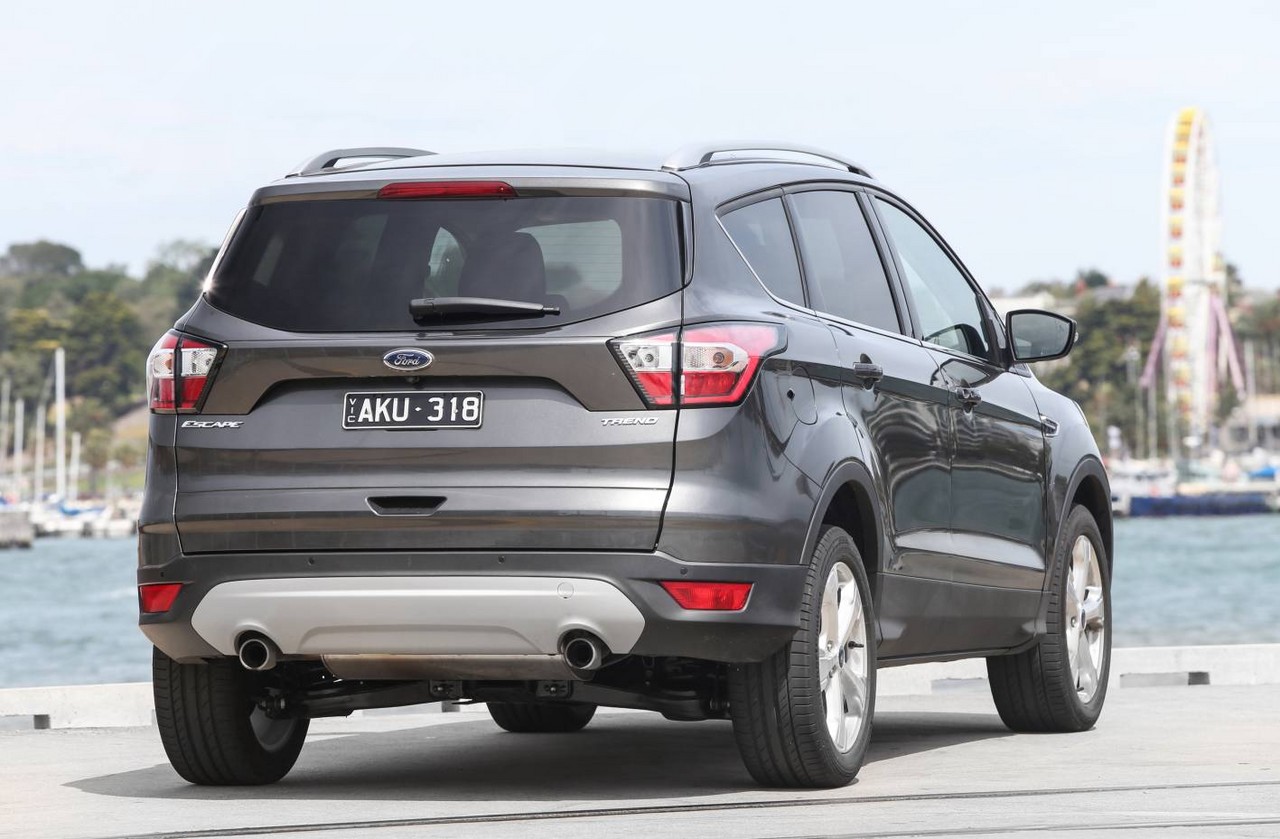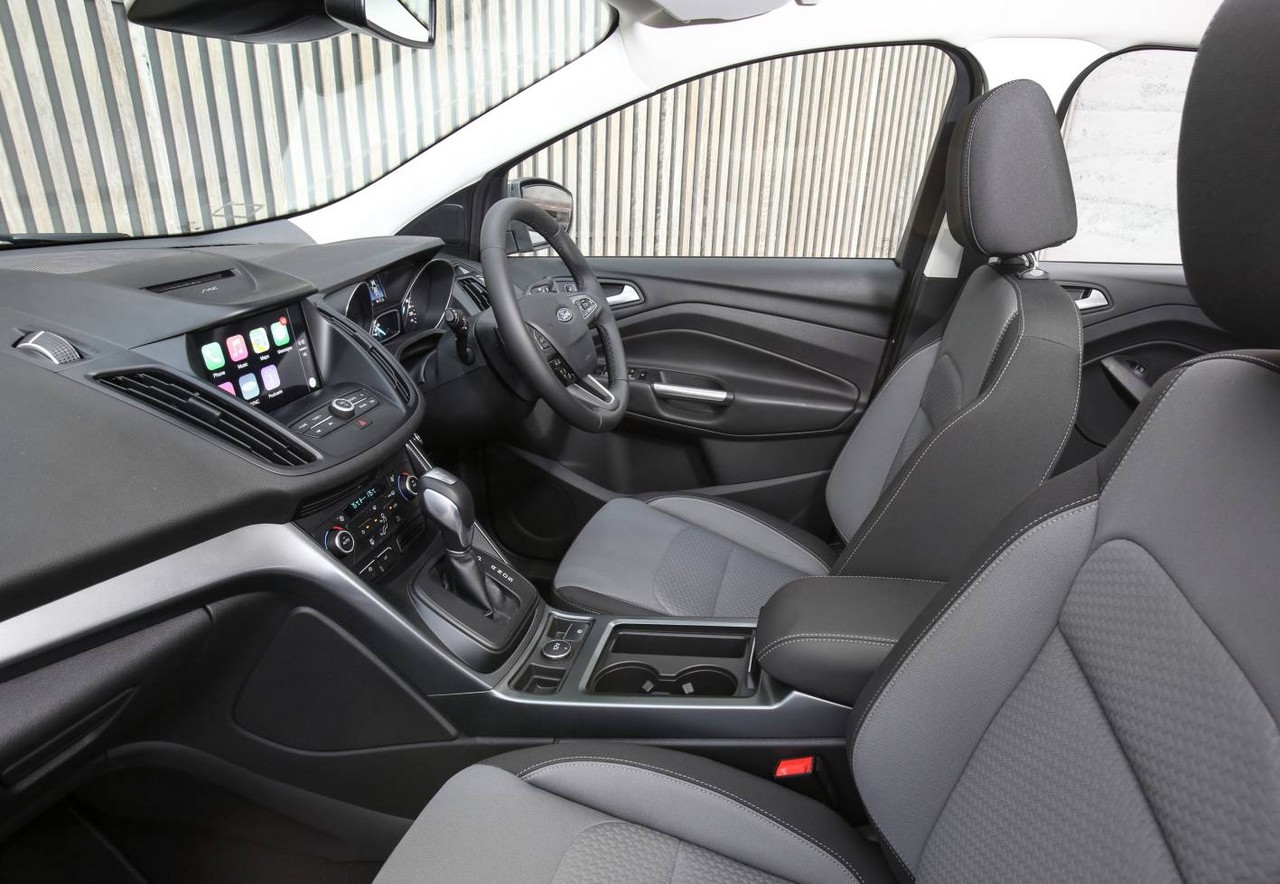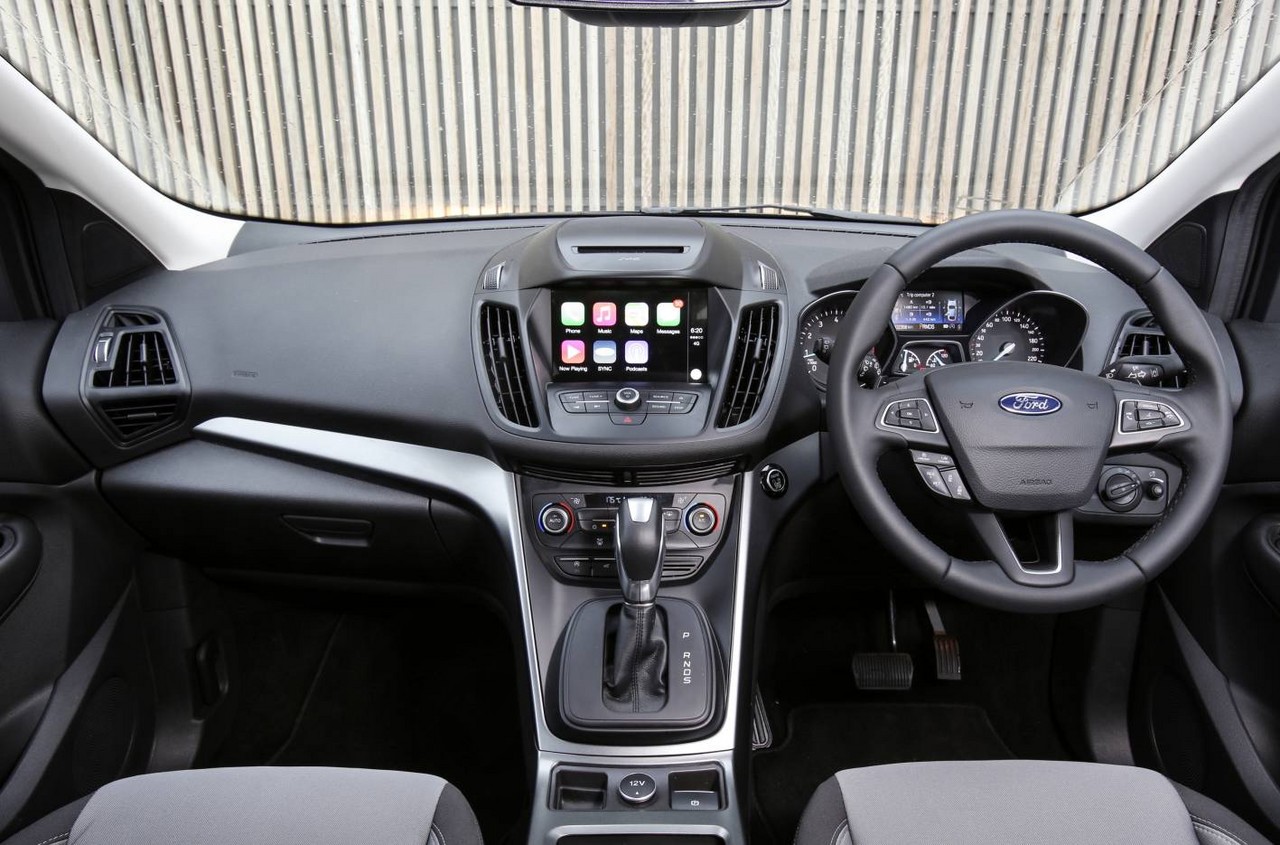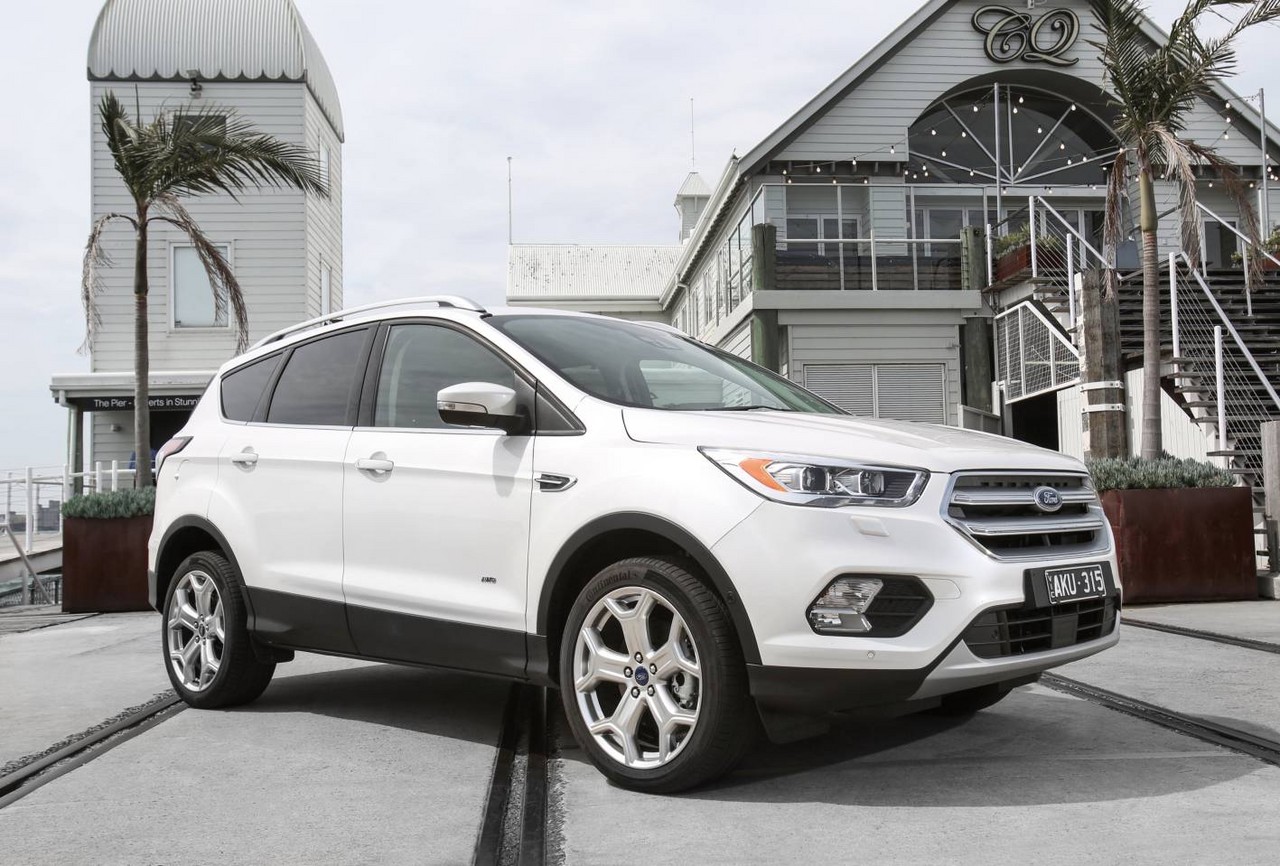
- Frugal turbo-diesel engine
- Impressive dynamics
- Spacious interior
- Accurate, well-weighted steering
- Firm ride
- 1.5-litre ‘Ecoboost’ engines only adequate
- Average rear seat and cargo space
- Poor lateral and rear visibility
- Tyre noise
- Active safety technologies only available as an extra-cost option
Review: Ford ZG Escape (2017-20)
Overview
Commencing production in September 2016 and officially released in Australia in February 2017, the Ford ZG Escape was a mid-size SUV. Manufactured in Valencia, Spain, the 2017 Ford Escape was not an entirely new model but a mid-life update for the second-generation Ford Kuga . The Ford Escape was powered by 1.5- and 2.0-litre turbocharged petrol engines, and 2.0-litre turbo diesel engines. To reduce fuel consumption, all engines that were mated to automatic or double clutch (Ford’s ‘Powershift’) transmissions had an automatic start/stop function which could shut down the engine when the vehicle was stationary in traffic.
Compared to the Ford Mk.2 Kuga , the 2017 Ford Escape could be identified by its new bonnet with a wider central dome, large trapezoidal upper grille with two bars, smaller lower grille, new headlights with daytime running lights and re-styled tail-lights.
In September 2018, the Ford Escape range was expanded with an ST-Line variant which was distinguished by its sports suspension, retuned steering and styling package.
| Variant | Edition | Engine | Trans. | Peak power | Peak torque |
|---|---|---|---|---|---|
| 1.5i EcoBoost FWD | Ambiente | 1.5-litre turbo petrol I4 | 6sp man. | 110 kW at 6000 rpm | 240 Nm at 1600-5000 rpm |
| 1.5i EcoBoost FWD | Ambiente, Trend |
1.5-litre turbo petrol I4 | 6sp auto | 134 kW at 6000 rpm | 240 Nm at 1600-5000 rpm |
| 1.5i EcoBoost AWD | Ambiente | 1.5-litre turbo petrol I4 | 6sp auto | 134 kW at 6000 rpm | 240 Nm at 1600-5000 rpm |
| 2.0i EcoBoost AWD | Trend, Titanium, ST-Line |
2.0-litre turbo petrol I4 | 6sp auto | 178 kW at 5500 rpm | 345 Nm at 2000-4500 rpm |
| 2.0 TDCi AWD | Trend, Titanium |
2.0-litre turbo diesel I4 | 6sp DCT (‘Power shift’) |
132 kW at 3500 rpm | 400 Nm at 2000-2500 rpm |
All-wheel drive system
The Ford ZG Escape was available with Ford’s ‘Intelligent all-wheel drive’ system which utilised a JTEKT multi-plate clutch pack between the front and rear differentials. In normal conditions, the clutch pack was not engaged so that only the front wheels were driven (to improve fuel efficiency). The all-wheel drive system, however, continuously monitored traction inputs and, if it determined that rear-wheel drive was needed, the clutch would engage to increase torque to the rear axle in a linear fashion up to a 50:50 front:rear torque split.
All-wheel drive Ford Escape vehicles also had a ‘Torque Vectoring Control’ function which could apply the brakes to the inside front wheel when cornering to effectively transfer torque to the opposite wheel and thereby reduce understeer.
Dimensions
Like the Ford Mk.2 Kuga , the Ford ZG Escape was underpinned by Ford’s C1 platform. Compared to the Mk.2 Kuga, the Ford Escape was 7 mm longer (at 4531 mm) and 1 mm taller (1703 mm), but width (1838 mm) and wheelbase length (2690 mm) were unchanged.
The Ford Escape had a luggage capacity of 456 litres beneath the cargo cover, though 1603 litres was available when the rear seat was folded down and luggage was filled to the roofline.
Suspension and steering
The Ford Escape had MacPherson strut front suspension with coil spring dampers, lower L-arms with front rubber bushings and anti-roll bar, mounted on a separate reinforced cross-member sub-frame. The fully independent, multi-link rear axle had a ‘control blade’ (trailing arm) and anti-roll bar mounted to the knuckle with double ball-joint links.
The Ford Escape had rack-and-pinion steering with electric power assistance; the steering wheel required 2.6 turns from lock to lock and the turning circle was 11.1 metres.
Safety equipment
Standard safety equipment for the Ford Escape included dual front airbags, a driver’s knee airbag, front side airbags, full-length curtain airbags (i.e. for front and rear occupants), ABS, electronic brake force distribution, brake assist, electronic stability control, traction control and front seatbelts with pre-tensioners and load limiters.
Upon its release, the Ford Escape could be specified with an extra-cost ‘Technology Pack’ which included the following safety technologies –
- Enhanced Active City Stop: operating at speeds between 3.6 km/h and 50 km/h, Active City Stop used sensors at the front of the vehicle to monitor the road ahead for stationary objects and pre-charges the braking system if the vehicle was approaching too quickly. If a collision is assessed to be imminent, the system reduces engine torque and automatically applies the brakes to reduce vehicle speed. As such, collisions at speeds of up to 15 km/h could be prevented and the severity of impacts between 15 km/h and 50 km/h reduced;
- Adaptive Cruise Control (ACC): adaptive cruise control could adjust vehicle speed to maintain a pre-set distance from the vehicle ahead by braking or accelerating up to the specified cruising speed;
- Blind Spot Information System (BLIS): operating at speeds above 10 km/h, BLIS was a sensor-based system which displayed an alert in the side mirror when a vehicle was detected in the driver’s blind-spot;
- Rear Cross Traffic Alert (RCTA): was able to detect approaching vehicles within a range of 40 metres when reversing out of a parking space;
- Lane Departure Warning with Lane Keeping Aid: operating at speeds above 65 km/h, the lane departure and keeping functions used a forward-facing camera to determine if the Ford Escape was about to depart from its lane without indicating. The lane departure warning system would alert the driver via steering wheel vibrations if the vehicle was about to depart from its lane. If the Escape departed from its lane, the Lane Keeping Aid would apply steering torque to return the vehicle to its lane;
- Automatic high beam: automatically used high beam headlights in dark conditions where safe to do so and, to avoid dazzling other drivers, would switch to low beams where traffic was detected;
- Driver Impairment Monitor: monitored driver behaviour for signs of fatigue and, if detected, would alert the driver; and,
- Tyre Pressure Monitoring System (TPMS).
From September 2018, the Ford Escape was equipped with ‘Enhanced Active City Stop’ as standard. Furthermore, standard safety equipment for the Escape ST-Line included:
- Blind Spot Information System; and,
- Rear Cross Traffic Alert.
Euro NCAP testing
In Euro NCAP testing , the related 2013 Ford Mk.2 Kuga received a five star safety rating which included a 94 per cent adult occupant protection rating and an 86 per cent child occupant protection rating. In the front offset crash test, protection for the front occupants was generally rated as good, though chest protection was only rated as adequate, as was lower leg protection for the front passenger. Maximum points were awarded in the side impact test; in the more severe pole test, however, chest protection was rated as adequate.
Under ANCAP’s methodology, the Ford Kuga received a five star adult occupant protection rating with a score of 36.33 out of 37.
Features: Ford Escape Ambiente
Standard features for the Ford Escape Ambiente included 17-inch steel wheels with 235/55 R17 99V tyres, a six speaker sound system with digital radio tuner (DAB+), a CD player and two USB inputs, an eight-inch colour touchscreen with satellite navigation, cloth seat trim, dual-zone climate control air conditioning, cruise control with speed limiter, halogen projector headlamps, front and rear fog lamps, daytime running lights (halogen), a reversing camera, rear parking sensors, 60/40 split-fold rear seats, a leather-wrapped steering wheel, remote central locking, power adjustable and heated door mirrors, power windows, a height and reach adjustable steering wheel, three 12 volt power outlets, a cargo cover, front floor mats, a trip computer and an immobiliser. From September 2018, the Escape Ambient was equipped with 17-inch alloy wheels.
As standard, the Ford Escape was equipped with Ford’s ‘SYNC 3’ connectivity system which included Bluetooth mobile phone connectivity with audio streaming, Apple CarPlay and Android Auto smartphone integration, and SYNC AppLink which enabled voice activation of smartphone apps such as Spotify, AccuWeather and Pandora.
The ‘SYNC 3’ connectivity system also included Ford’s ‘Emergency Assistance’ which, in the event of a collision that triggers the airbags or fuel shut-off, could use a synchronised mobile phone to automatically call local emergency service operators and provide GPS coordinates of the vehicle’s location.
For Ford Escape models with automatic (or double clutch) transmissions, steering wheel gearshift paddles were fitted as standard.
Features: Ford Escape Trend
Compared to the Escape Ambiente, the Ford Escape Trend was further equipped with 7.5J x 18-inch alloy wheels with 235/50 R18 101V tyres, dusk-sensing headlights, rain-sensing wipers, leather-wrapped gear lever, proximity key for keyless entry, auto-dimming rear view mirror and rear privacy glass. Visually, the Ford Escape Trend could be identified by its silver-painted upper grille and roof rails.
Features: Ford Escape Titanium
The range-topping Ford Escape Titanium was distinguished by its 8.0J x 19-inch alloy wheels with 235/40 R19 99V tyres, nine speaker Sony audio system, leather accented seat trim, heated front seats, ten-way power adjustable driver’s seat, bi-xenon headlights, LED daytime running lights, front parking sensors, power folding door mirrors, panoramic sunroof, velour floor mats (front and rear), hands-free tailgate and ambient lighting. In addition to its larger alloy wheels, the Escape Titanium could be identified by its LED tail-lights.
For its bi-xenon headlights, the Escape Titanium featured Ford’s ‘Adaptive Front Lighting System’ which monitored ambient light conditions, vehicle speed, steering angle and the distance to an object ahead to adjust the beam angle of the bi-xenon headlights to enhance visibility.
The Ford Escape Titanium was also equipped with Ford’s ‘Enhanced Active Park Assist’ which can use sensors to measure parking spaces and provide automated steering for parallel and perpendicular parking manoeuvres while the driver controls vehicle speed. Furthermore, Enhanced Park Assist had a ‘Park-Out Assist’ function which helped drivers exit from a parallel parking space.
Ford Escape ST-Line
As noted above, the Ford Escape ST-Line was released in Australia in September 2018. Changes for the Escape ST-Line included:
- Sports suspension that reduced the vehicle ride height by 10 mm;
- Thicker anti-roll bars to reduce body roll; and,
- Re-tuned steering.
Visually, the Ford Escape ST-Line could be identified by its 18-inch ‘Absolute Black’ alloy wheels and black-finished front grille, fog lamp surrounds, roof rails and rear valance.
Features for the Ford Escape ST-Line included leather combination trim with red stitching, front and rear parking sensors, a proximity key (Ford’s ‘Smart Keyless Entry’), an ST-Line steering wheel, stainless steel pedals, unique scuff plates and ST-Line floor mats.
Related links
- Brochure: Ford ZG Escape (January 2017)
- Brochure: Ford ZG Escape (May 2017)
- Behind the Wheel: 2017 Ford Escape Trend Review
